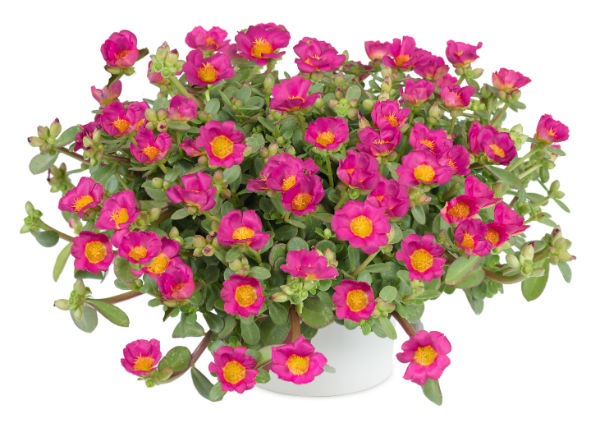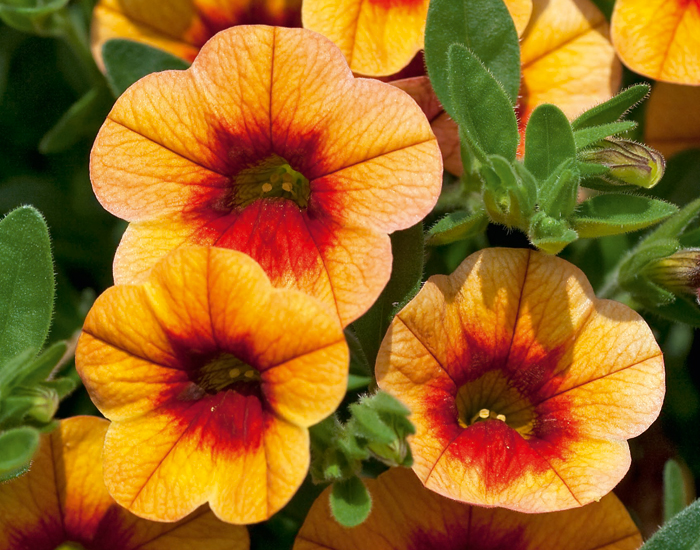Few plants can rival Vinca for its ability to thrive in hot and dry weather.

There are three heat-busting plants that come into their own from December to February, SA’s hottest months of the year.
For predominantly succulent gardens short on flowers, a great addition is Portulaca Nano, a low-growing, mounded groundcover that’s always covered in flowers.
The colour range of Fuchsia, Hot Pink, Orange and Yellow, will add a splash, particularly when planted in front of silvery-leaved succulents like Blue Chalk Sticks, the spiky Mother-in-law’s-tongue or as a groundcover around the striking Agave varieties.
Other uses for it would be as a hardy pavement plant, in hanging baskets and in mixed containers. It is extremely drought and heat tolerant and keeps flowering through times of low rainfall.
Plants do best in full sun and grow in ordinary garden soil. The flowers open early in the morning, creating a ball of colour well into the evening.

Portulaca Nano Fuchsia.
It is an easy-to-care-for summer annual that will perform as a perennial in frost free areas.
Few plants can rival Vinca for its ability to thrive in hot and dry weather. The new Vinca Tattoo series are a great improvement on the serviceable yet not hugely inspiring hybrid Vinca.
The new Vinca has slightly frilly petals, dark eyes that make the flowers stand out and a shading on the petals.
The colours are also quite different from the run-of-the-mill Vinca colours.
Black Cherry has a dark eye that swirls onto the petals giving it that exotic tattoo appearance, Raspberry has vibrant deep rose-pink petals with a dark eye, Papaya has pinkish-orange flowers with a purple eye that blends over the petals and Tangerine is a smoky orange with a dark eye. The hotter it gets, the better the black eye and colour swirls show up.
Plants are bushy and well-branched, resulting in more flowers, and grow to a garden height of 25 to 36cm.
Vinca Tattoo Papaya.
Plant in full sun to bring out the intensity of the flower colours. Plants need well drained soil and regular watering in the early growing stages.
Once established, watering once a week in summer is adequate. Trim when necessary for shaping and to remove spent flowers.
For impact, mass plant them in a bed, or pair them with dark purple flowers that like the same growing conditions, such as salvia New Dimension Blue or as a border for taller Salvia Black and Bloom or Mystic Spires.
In containers, the compact, but spreading, growth habit makes them suitable for use as a filler in the “thriller-spiller-filler” combination. Plant around the edge of the container where it can spill over gracefully.
As tough patio container plants, Calibrachoa have proved their worth. Calibrachoa MiniFamous Apricot with Red Eye appeals for its vibrant colours; apricot-peach trumpet-shaped flowers with yellow overtones, yellow throats and cherry-red centres.

Calibrachoa MiniFamous Apricot.
Because of its trailing habit it looks spectacular in a hanging basket or in outdoor containers, especially if planted around the edge of the container. It can receive morning sun and afternoon shade.
The more sun it gets, the more often it needs watering because hanging baskets dry out quickly.
As a garden plant, its best effect is tumbling over a retaining wall. Space plants 20cm apart, and the result will be a dense, flowering groundcover that attracts bees.
It can be grown in full sun to semi shade. Although heat tolerant, it needs regular watering and fertilising once a month.
For more information: www.ballstraathof.co.za
For more news your way, download The Citizen’s app for iOS and Android.








